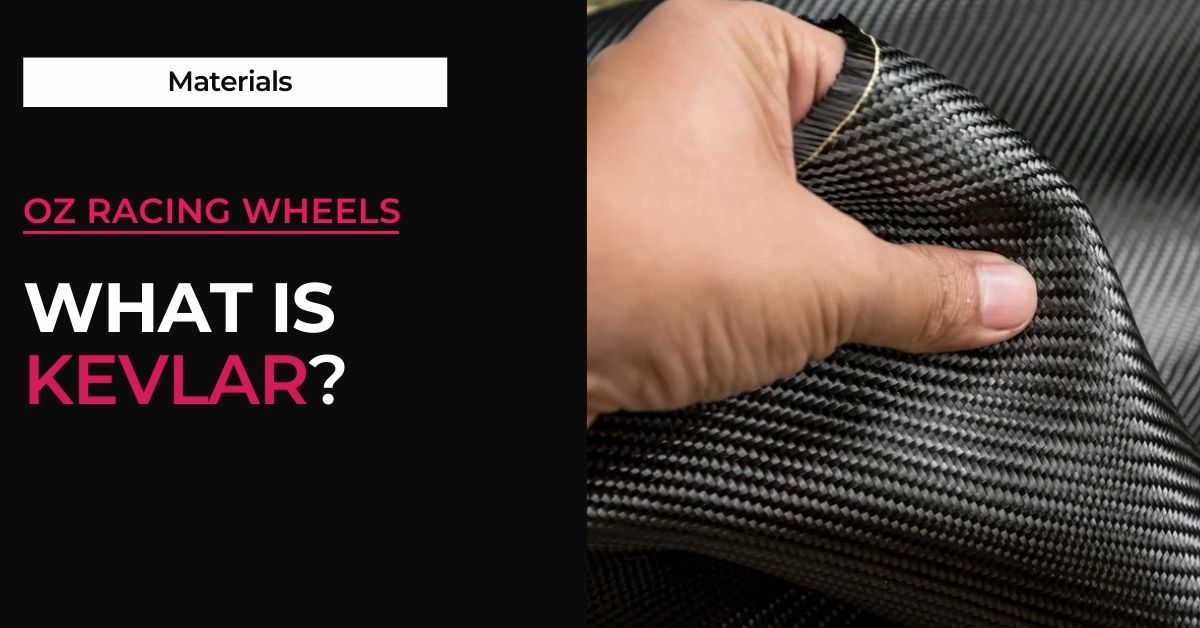You may think Kevlar is some mystical material found in the depths of a secret jungle, but no, no, no. It’s actually a man-made wonder, or should we say “woman-made”?
Kevlar (or Kevlar® to be exact) was invented in the 1960s, by a clever chemist named Stephanie Kwolek. She stumbled upon this incredible substance, by accident, while working at DuPont.
Here she is:

Kevlar material is used so much in motorcycle gear, motorsport gear, and automotive parts for many reasons which we’ll delve into below, but in a nutshell the fabric is not only super tough, it offers breathability, flexibility, and dissipates heat quickly and evenly through the fibers.
Let’s take a good look at all things Kevlar:
The History of Kevlar
You probably weren’t alive in the Swinging 60s, and neither was I, but it was a decade of innovation and scientific breakthroughs. It was the decade man landed on the moon, or depending on what rabbit holes you go down it was also the decade photo manipulation was invented, early pre-Photoshop “Photoshopping” if you will.
It was 1964 when talented chemist Stephanie Kwolek was hard at work in the research labs of DuPont, an American chemical company. Her task was simple – to find a new and robust fiber to reinforce tyres, with the aim to improve fuel efficiency and performance.
Little did she know her work would lead to one of the most influential inventions of the 20th century.
During her experimentation, Kwolek synthesised a unique polymer solution and decided to put it through its paces by spinning it into fibers. To her surprise, the resulting material was unlike anything she had seen before. It possessed extraordinary strength and stiffness, and most notably, was incredibly lightweight.
Clearly she was on the right path, and this chance discovery became the foundation of what would later become “Kevlar”.
DuPont immediately recognised the potential, and wasted no time in further developing and refining this newfound wonder material.
By 1971, Kevlar was commercially introduced to the world, and its applications extended far beyond tyre reinforcement. I doubt Kwolek or DuPont could have imagined how successful the material would become.
The outstanding properties of Kevlar were truly harnessed to create a range of high-performance products, particularly in the realm of personal protective equipment, and later on the legendary Kevlar jeans which keep the knee’s of bikers safe to this day. And of course, much more.
Kevlar’s robustness found its first major application in law enforcement and military sectors. The material’s unmatched resistance to bullets and sharp objects made it an ideal component for body armour and helmets, significantly improving the safety and survivability of law enforcement officers and military personnel.
It didn’t take long for Kevlar body armour and helmets to start protecting Hollywood actors too, with clear evidence in many 1980s Hollywood movies.
As Kevlar’s reputation for strength and versatility spread, its applications continued to grow across various industries. It found its way into aircraft components, reinforcing structural elements to enhance safety in aviation. Additionally, it contributed to the advancement of sports gear, making everything from racing sails to bicycle tires more durable and reliable.
Today, Kevlar is a key component in the design and build of Formula 1 cars, which I’ll discuss specifically below. Many of our leading race car drivers can thank Kevlar for their health and safety, both in the car and post-race paddock brawls.
Over the decades, Kevlar has undergone continuous refinement and improvement. Its use in bulletproof vests and body armor, in particular, has saved countless lives and protected those on the front lines of danger.
In the world of materials, Kevlar stands as an iconic example of accidental brilliance, showcasing the potential of scientific exploration and the far-reaching impact of chance discoveries. From its humble beginnings as an experimental fiber in a lab to its widespread applications as a lifesaving superhero material, Kevlar continues to shape industries and contribute to the safety and well-being of people around the globe.
Pretty amazing stuff.
What is Kevlar Made From?
Kevlar is spun from long chains of molecules called polyamides. That may sound a little scientific (and it doesn’t mean much to me either), but this is what gives Kevlar its superhuman strength. It’s a bit like weaving a fabric of steel, only better.
This wonder material is what you find in top-notch body armor, aerospace equipment, and of course sporting gear. The bikers among us will be more familiar with Kevlar, but did you know it’s also used a lot in aftermarket car mods, race cars, and Formula 1 cars.
Quick Facts About Kevlar
- Kevlar is a man made fibre, which offers incredible protection against abrasion, cuts and heat. Five times stronger than steel pound for pound, flame resistant up to 400 degrees Celsius and exceptionally cut and slash resistant.
- Kevlar in various forms is used in ropes that tie up ships, clothing worn by saw-millers, firefighters, glass handlers and air force pilots, tank armour, aeroplane wings and lightweight canoes.
- Kevlar is probably best known in the production of bullet proof vests!
- The knitted Kevlar fabric in motorsport and motorcycling cannot be easily ripped, torn or damaged in any way apart from manually cutting with scissors and the like.
General Features of Kevlar
- High Tensile Strength at Low Weight.
- Low Elongation to Break High Modulus (Structural Rigidity).
- Low Electrical Conductivity.
- High Chemical Resistance.
- Low Thermal Shrinkage.
- High Toughness (Work-To-Break).
- Excellent Dimensional Stability.
- High Cut Resistance.
- Flame Resistant, Self-Extinguishing.
Kevlar in Formula 1
Did you know modern day Formula 1 helmets are literally bullet proof?
This is thanks to the use of Kevlar, often combined with carbon fiber and other ballistic materials.
The cockpit of an F1 car, known as the “survival cell” or monocoque, is made from a 6mm layer of carbon fiber and Kevlar. This protects the world’s best drivers in a penetration resistant crash-protection shell.
Other parts of Formula 1 cars are made from Kevlar too, such as wings and other external parts. This ensures maximum durability, and also safety as it prevents these parts shattering on impact – can you imagine how long you’d have to wait for safety cars while they pick up fragments of Red Bull all over the track?
Kevlar is used in other components as well such as automotive hoses and belts, which improves durability and safety significantly, but also allows better performance to be achieved.
The use of Kevlar in automotive components isn’t just race cars, you’ll find it in regular road cars and trucks as well.
Kevlar® is a registered trademark of DuPont™
More information visit: https://www.dupont.com/brands/kevlar.html
So there you have it, folks – Kevlar, a man-made marvel that’s tougher than a tank and might just be the secret to a safer world!




